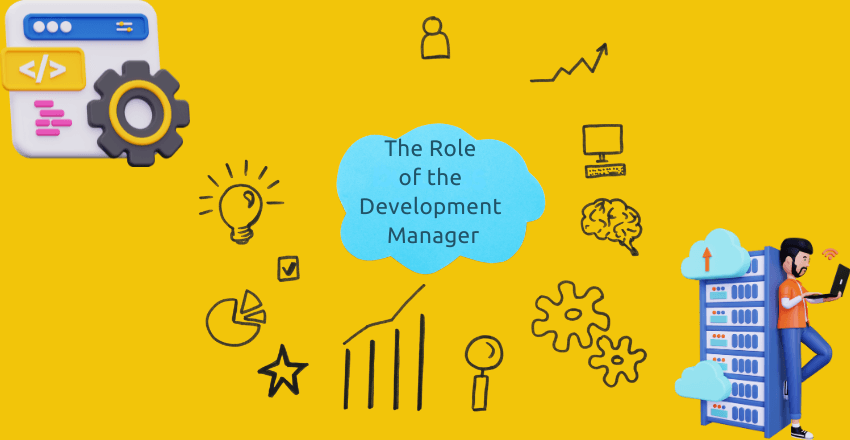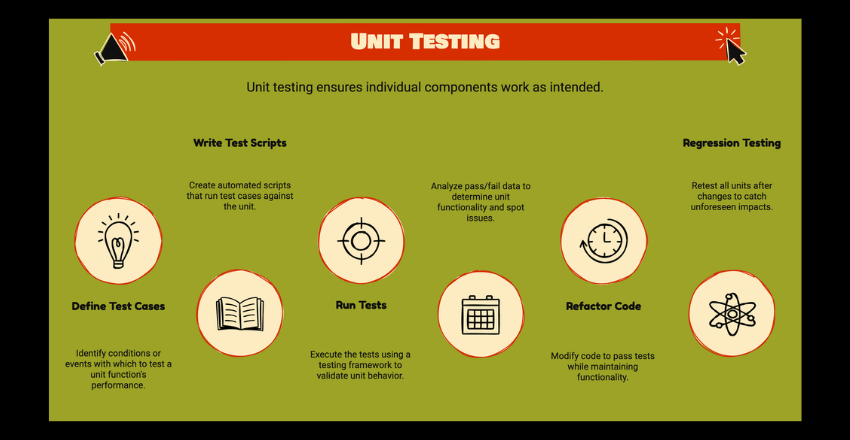Is your development manager merely coordinating tasks, or are they driving innovation? This is a question many companies need to ask themselves. The role of a development manager is often misunderstood as mere task coordination, delegating tasks, meeting deadlines, and process enforcement.
Most companies, unfortunately, limit the scope of this role to these functions, causing a major disconnect in the team’s progress.
From my experience, development managers should serve as more than planners—they should be visionaries, fostering a culture of innovation, setting a high bar for quality, and inspiring their teams to reach it. Also development managers should function as enablers, fostering an environment of innovation, autonomy, and collaboration.
In actuality, an effective development manager bridges the gap between the technical and business domains, sets the pace for innovation, and empowers their team to achieve operational excellence.
Misunderstanding the Role
Many perceive development managers as task coordinators. They are seen as the ones who delegate tasks, ensure deadlines are met, and enforce processes. This perception is widespread. But it’s incomplete. When companies limit the role to these functions, they miss out on the real value a development manager can bring. A team led by a mere task coordinator may hit deadlines, but it will likely lack the drive and vision needed for true innovation. This disconnect can stifle progress and morale.
Development managers must go beyond the superficial tasks of planning and delegation. They need to dig deeper into understanding the team dynamics and individual strengths. They must identify and remove roadblocks that hinder the team’s progress, whether they are technical, operational, or interpersonal. Recognizing that each team member has unique skills and aspirations is crucial. A great development manager will leverage these individual strengths to build a cohesive, high-performing team.
The Visionary Aspect

Development managers should be visionaries. They need to look beyond the immediate tasks and see the bigger picture. Setting a high bar for quality is crucial. This doesn’t mean being a perfectionist, but rather striving for excellence. A visionary development manager fosters a culture of innovation. They encourage their team to think creatively and explore new ideas.
For example, consider a development manager who encourages regular brainstorming sessions. They create a safe space for the team to share ideas, no matter how unconventional. This approach can lead to breakthrough innovations. When team members feel their ideas are valued, they are more likely to take ownership of their work and strive for excellence.
Another key aspect is inspiring the team. A visionary development manager motivates their team by setting clear goals and showing how their work contributes to the bigger picture. They celebrate successes and learn from failures, creating a positive and productive work environment.
A visionary development manager also keeps an eye on industry trends and emerging technologies. They push their teams to adopt new tools and methodologies that can enhance productivity and innovation. For instance, a development manager might encourage the use of agile methodologies to improve flexibility and responsiveness. Agile practices such as sprints, stand-ups, and retrospectives can significantly enhance team collaboration and productivity.
Here’s an example of how agile practices can be implemented:
# Example of a simple agile sprint backlog management using Python
class SprintBacklog:
def __init__(self):
self.backlog = []
def add_task(self, task):
self.backlog.append(task)
return f"Task '{task}' added to the sprint backlog."
def complete_task(self, task):
if task in self.backlog:
self.backlog.remove(task)
return f"Task '{task}' completed."
return f"Task '{task}' not found in the sprint backlog."
def view_backlog(self):
return f"Current Sprint Backlog: {self.backlog}"
# Usage
sprint = SprintBacklog()
print(sprint.add_task("Implement user login feature"))
print(sprint.add_task("Fix payment gateway bug"))
print(sprint.view_backlog())
print(sprint.complete_task("Implement user login feature"))
print(sprint.view_backlog())By implementing agile practices, development managers can foster a more adaptive and responsive team environment. This, in turn, drives innovation and continuous improvement.
The Enabler Role
In addition to being visionaries, development managers should be enablers. They create an environment that fosters innovation, autonomy, and collaboration. Encouraging autonomy means trusting your team to make decisions. It’s about giving them the freedom to explore and experiment.
For instance, a development manager might implement a policy where team members can dedicate a portion of their time to personal projects. This can lead to unexpected innovations and keeps the team engaged and motivated.
Collaboration is equally important. A development manager should promote open communication and teamwork. This can be achieved through regular team meetings and collaborative tools. When team members work together and share their knowledge, they can solve problems more efficiently and come up with better solutions.
A great development manager also understands the importance of continuous learning and development. They provide opportunities for their team to attend workshops, conferences, and training sessions. Investing in the team’s professional growth not only enhances their skills but also boosts their morale and job satisfaction.
Enabling a team also involves recognizing and addressing individual needs and aspirations. A one-size-fits-all approach doesn’t work. Development managers should have regular one-on-one meetings with their team members to understand their career goals and challenges. Providing mentorship and career development opportunities is essential for retaining top talent.
Bridging Technical and Business Domains
A great development manager acts as a bridge between the technical and business domains. They understand both aspects and can communicate effectively with both sides. This is crucial for driving innovation.
For example, when a development manager understands the business goals, they can align the technical efforts with these objectives. They can also translate technical challenges and possibilities to non-technical stakeholders. This ensures that the team’s work is in line with the company’s strategic direction.
Here’s how a development manager might translate business requirements into technical tasks:
# Example of translating business requirements into technical tasks
class BusinessRequirement:
def __init__(self, description):
self.description = description
def to_technical_task(self):
# Simplified example of converting business requirement to technical task
return f"Implement feature: {self.description}"
# Usage
requirement = BusinessRequirement("User should be able to reset password via email")
technical_task = requirement.to_technical_task()
print(technical_task) # Output: Implement feature: User should be able to reset password via emailBy effectively bridging the gap between technical and business domains, development managers ensure that their teams deliver solutions that meet business needs and drive the company’s success.
Setting the Pace for Innovation

Setting the pace for innovation involves more than just encouraging new ideas. It requires creating a structured process for developing and implementing these ideas. A development manager should establish clear processes for innovation, from idea generation to execution.
For example, they might set up an innovation pipeline where ideas are regularly reviewed, tested, and either implemented or discarded. This ensures that innovation is ongoing and systematic, rather than sporadic and unorganized.
Here’s a simple framework for managing an innovation pipeline:
# Example of managing an innovation pipeline using Python
class InnovationPipeline:
def __init__(self):
self.ideas = []
self.reviewed = []
self.implemented = []
def submit_idea(self, idea):
self.ideas.append(idea)
return f"Idea '{idea}' submitted."
def review_idea(self):
if self.ideas:
idea = self.ideas.pop(0)
self.reviewed.append(idea)
return f"Idea '{idea}' reviewed."
return "No ideas to review."
def implement_idea(self):
if self.reviewed:
idea = self.reviewed.pop(0)
self.implemented.append(idea)
return f"Idea '{idea}' implemented."
return "No ideas to implement."
def view_pipeline(self):
return {
"Submitted Ideas": self.ideas,
"Reviewed Ideas": self.reviewed,
"Implemented Ideas": self.implemented
}
# Usage
pipeline = InnovationPipeline()
print(pipeline.submit_idea("Develop a new customer feedback system"))
print(pipeline.submit_idea("Implement machine learning for data analysis"))
print(pipeline.review_idea())
print(pipeline.implement_idea())
print(pipeline.view_pipeline())This framework helps ensure that the innovation process is well-organized and that valuable ideas are not lost.
Operational Excellence
Achieving operational excellence is a key goal for any development manager. This involves implementing best practices and continuously improving processes. It’s about ensuring that the team works efficiently and effectively.
One way to achieve this is through regular code reviews. This not only ensures high-quality code but also fosters a culture of learning and improvement. Another practice is automated testing, which can catch issues early and save time in the long run.
Here’s a simple example of how automated testing can be implemented in a development process:
import unittest
def add(a, b):
return a + b
class TestAddFunction(unittest.TestCase):
def test_add_integers(self):
self.assertEqual(add(1, 2), 3)
self.assertEqual(add(-1, 1), 0)
def test_add_floats(self):
self.assertEqual(add(1.5, 2.5), 4.0)
self.assertEqual(add(-1.5, 1.5), 0.0)
if __name__ == '__main__':
unittest.main()This simple code demonstrates how automated tests can ensure the reliability of a function. By integrating such practices, development managers can ensure that their teams produce high-quality, reliable software.
Operational excellence also involves process optimization. Development managers should constantly seek ways to improve workflows and reduce bottlenecks. They should leverage tools and technologies that enhance productivity. For example, continuous integration and continuous deployment (CI/CD) pipelines can streamline the development process and reduce time to market.
Here’s a basic example of a CI/CD pipeline setup:
# Example of a simple CI/CD pipeline configuration using YAML
stages:
- build
- test
- deploy
build:
stage: build
script:
- echo "Building the project..."
- npm install
- npm run build
test:
stage: test
script:
- echo "Running tests..."
- npm test
deploy:
stage: deploy
script:
- echo "Deploying to production..."
- npm run deployBy implementing such pipelines, development managers can ensure that code changes are automatically built, tested, and deployed, reducing the risk of errors and accelerating the release cycle.
Development managers should not be limited to task coordination. They should be visionaries who inspire and motivate their teams. They should be enablers who create environments of innovation and collaboration. They should bridge the gap between technical and business domains and set the pace for innovation. By doing so, they can drive their teams towards operational excellence and true innovation.
Companies need to rethink the role of their development managers.
Source Links
https://herovired.com/learning-hub/blogs/role-of-leadership-in-development-growth-of-a-business/
https://www.gallup.com/workplace/328460/why-managers-need-leadership-development.aspx














